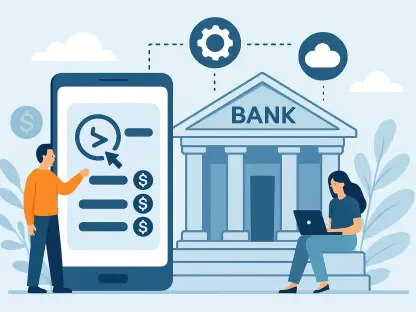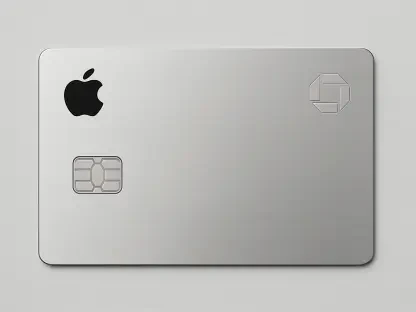The advancement of payment technology has ushered in an era where transactions occur without the spender ever consciously engaging in a payment process. This era is characterized by the adoption of invisible payment systems that utilize innovative technologies to streamline how financial exchanges are made. Invisible payments are designed to be both seamless and secure, ensuring consumers can complete transactions without the need for physical interaction. From cafes to taxis, these systems automate the process, eliminating the need for physical currency exchanges or even the swipe of a card, revolutionizing the shopping and service experience.
Advantages of Invisible Payment Systems
Enhanced Customer Experience
Transformative technologies such as facial recognition, sensors, and specialized apps are becoming central components in the realm of invisible payments. Not only has their implementation expedited service delivery across multiple sectors, but it also significantly enhances customer satisfaction, especially in environments with high customer traffic, such as retail stores and public transport. Consumers benefit by avoiding long queues and experiencing faster service, which in turn allows businesses to accommodate more customers efficiently. This streamlined process is more than just a trend; it’s increasingly becoming an expected standard in providing a hassle-free purchasing experience.
Additionally, the automation facilitated by invisible payments removes the burden of carrying physical wallets or managing multiple payment methods. Consumers can make quick payments online without constantly entering payment details, significantly improving the convenience of online shopping. This technology also plays a pivotal role in subscriptions and streaming services, where recurring payments occur in the background, ensuring uninterrupted access to content and services. As consumers become accustomed to these conveniences, the demand for swift, invisible transactions is likely to grow, pushing companies to adopt these systems widely.
Business Efficiency
For businesses, invisible payments provide an opportunity to optimize operational processes, reduce transaction times, and enhance service delivery. By minimizing the time spent at checkout lines and enhancing transaction efficiency, businesses can reallocate resources to other areas, such as improving customer engagement or expanding service offerings. In restaurants and cafes, these systems reduce congestion at checkout points, allowing businesses to focus on serving a larger volume of customers during busy periods. Such technological integration also heightens the potential for data collection, enabling businesses to gain insights into consumer behavior and preferences, which can be used to refine marketing strategies and product offerings.
This shift toward enhanced efficiency through technological innovation positions businesses more competitively in an evolving market. Embracing invisible payments also signifies a commitment to innovation and modernization, which can attract tech-savvy consumers keen on seamless transactional experiences. As businesses continue to explore the potential of invisible payments, the opportunity to revolutionize customer interaction and service delivery increases, providing a competitive edge in a rapidly advancing digital world.
Navigating the Challenges
Privacy Concerns and Security
Despite the myriad advantages, invisible payments introduce a series of challenges that must be addressed to ensure consumer trust is maintained, most notably around privacy and security. With technologies such as biometric data authentication playing a central role, concerns regarding data protection are paramount. Users often worry about who has access to their personal data, how it is stored, and the potential for misuse. The collection and storage of sensitive information, such as facial recognition profiles and fingerprints, heighten the risk of privacy breaches, requiring robust management strategies.
To counteract these concerns, companies developing invisible payment solutions must prioritize stringent encryption and data protection measures. Adopting comprehensive and transparent privacy policies is crucial in building consumer trust, assuring users that their data is safe from unauthorized access or fraudulent activities. Companies must stay ahead in the cybersecurity landscape by implementing advanced security protocols and being responsive to emerging threats to ensure the integrity of these new payment systems. Furthermore, educating consumers on how their data is used and protected can mitigate apprehensions and foster an environment of trust.
Future Integration
As invisible payments continue to integrate into daily life, their potential to transform how individuals interact with technology becomes increasingly apparent. Projections suggest that smart homes and wearable technology will soon autonomously execute transactions, such as grocery deliveries or transit passes, further embedding these systems into the fabric of everyday life. The continuous development and adoption of these technologies promise a future where payments become a background action, effortlessly integrated into routine tasks.
Looking ahead, companies are challenged to expand the functionality and accessibility of invisible payment systems, ensuring they are inclusive and adaptable across diverse environments and consumer groups. The seamless integration of these technologies must remain a priority, demanding ongoing improvements and innovations. As the landscape of financial transactions shifts, consumer expectations will drive further advancements, compelling providers to innovate while keeping security and user experience at the forefront. This will not only reshape consumer-financial interactions but also influence how society navigates economic exchanges in the digital age.
Imperatives for the Future
The progression of payment technology has brought about an era in which transactions are completed without the payer even consciously engaging in the act of making a payment. This new age is marked by the widespread adoption of invisible payment systems utilizing cutting-edge technologies that simplify how financial transactions are conducted. Invisible payments are specifically designed to be both smooth and secure, allowing consumers to finalize their purchases or service payments without needing any physical interaction. Whether it’s at a café, in a taxi, or during an online shopping spree, these systems automate the transaction process. They eliminate the necessity for exchanging physical cash or even swiping a credit card. By doing so, they have transformed the overall shopping and service experience, making it more efficient than ever. This revolution in how we pay makes transactions more convenient, reflecting the broader cultural shift towards digital and contactless interactions. The future promises even further integration of such technology in daily commerce.









